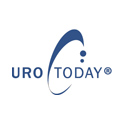OBJECTIVE: To better understand the associations between the certificate of need regulations and intensity-modulated radiotherapy dissemination.
METHODS: Using Surveillance, Epidemiology, and End Results-Medicare data, we identified men (aged ≥66 years) treated with radiotherapy for prostate cancer who had been diagnosed from 2001 to 2007. Using data from the American Health Planning Association, we sorted the health service areas (HSAs) according to the stringency of certificate of need regulations (low vs high) in that market. We assessed our outcomes (ie, the probability of intensity-modulated radiotherapy adoption and intensity-modulated radiotherapy use in the HSAs) using Cox proportional hazards and Poisson regression models, respectively.
RESULTS: The low- and high-stringency markets were similar in terms of racial composition (80% vs 85% white, P = .08), population density (1085 vs 558 people/square mile, P = .08), and income (median $38 683 vs $40 309, P = .44). However, the low-stringency markets had more patients with stage T1 disease (45% vs 36%, P < .01). The probability of intensity-modulated radiotherapy adoption across the 2 groups of HSAs was similar (P = .65). However, among the adopting HSAs, those with high stringency consistently had greater use of intensity-modulated radiotherapy (P < .01).
CONCLUSION: The certificate of need regulations fail to create significant barriers to entry for intensity-modulated radiotherapy. Among the HSAs that acquired intensity-modulated radiotherapy, high-stringency markets demonstrated a greater propensity for using intensity-modulated radiotherapy. These findings raise questions regarding the ability of the certificate of need regulations to control technology dissemination.
Written by:
Jacobs BL, Zhang Y, Skolarus TA, Wei JT, Montie JE, Schroeck FR, Hollenbeck BK. Are you the author?
Department of Urology, Division of Oncology, University of Michigan, Ann Arbor, MI; Division of Health Services Research, University of Michigan, Ann Arbor, MI.
Reference: Urology. 2012 Sep 18. pii: S0090-4295(12)00864-3.
doi: 10.1016/j.urology.2012.07.042
PubMed Abstract
PMID: 22999447
UroToday.com Prostate Cancer Section



